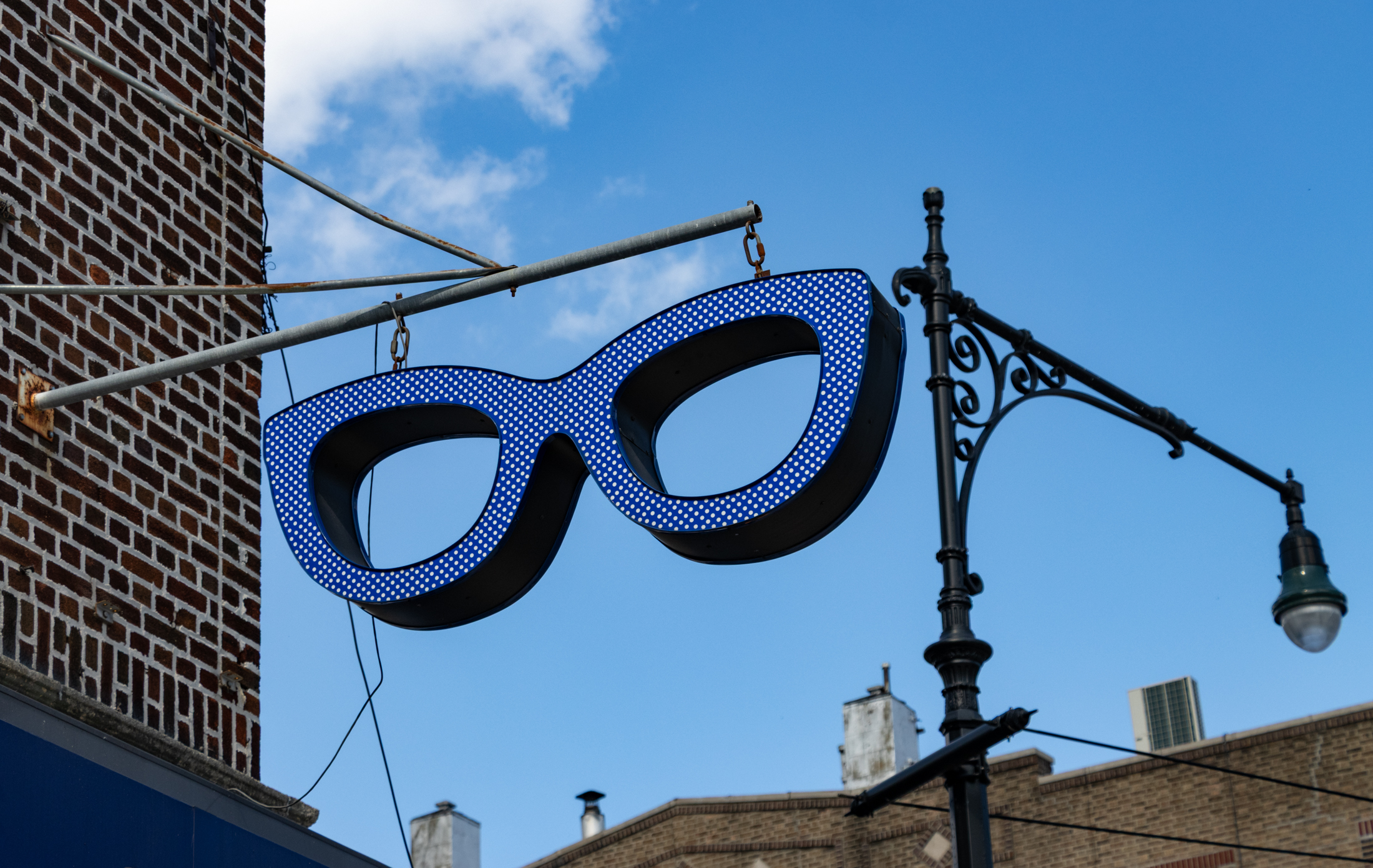Lead in the Water: More Than a Third of Test Kits Submitted in Decade Show Some Contamination
Thousands of lead pipes still serve individual buildings, as a city program offering free replacements falls short of its goals.

A Cobble Hill father had a plumber inspect his water pipes after historical records showed a service line was partly made out of lead, August 5, 2025. Photo by Alex Krales/THE CITY
by Lizzie Walsh
This article was originally published on August 25 at 5:01 a.m. EDT by THE CITY
More than one-third of home test kits sent in for testing by residents to the city’s environmental agency over the past decade had some level of lead — results that reflect many New Yorkers’ continued reliance on pipes containing the potent neurotoxin.
And more than 119,000 of the city’s privately owned underground service lines, which connect the water supply to individual buildings, are made of lead, and another 110,000 are of an unknown material, according to city Department of Environmental Protection records. The agency runs the water system and is responsible for overseeing replacement of all lead service lines by 2037 as part of a nationwide effort.
Lead is one of the most dangerous contaminants in drinking water, hazardous even at very low levels. At high levels in the bloodstream, it can cause irreversible health problems, including neurological defects, reproductive issues and other serious conditions.
But exactly how many lead pipes New York City has, DEP Commissioner Rohit Aggarwala said in an interview, remains unclear. While excavating in The Bronx as part of a pipe replacement program over the past year, the agency found nearly half of the water lines city records had listed there as being made of lead actually weren’t.
“There’s so much we don’t know,” he said. “About 30 percent of the unknowns that we’ve tested have turned out to be lead, but we really did not expect so many of the expected lead to be not.”
Then there’s the challenge of getting property owners to act.
Using federal infrastructure dollars, the DEP is offering to replace pipes for free in some neighborhoods in the Bronx and Queens, saving the roughly $15,000 cost. So far, the take-up has not been as welcoming as the department hoped for: Just 59 percent of 1,665 eligible property owners have participated, with the rest either failing to respond to multiple requests or explicitly denying the agency access to these lines.
Overall, New York City’s water is well within the bounds of U.S. Environmental Protection Agency standards. Currently, federal regulations only require city intervention when more than 10 percent of samples exceed an “action level” of 15 micrograms per liter — as they did in Flint, Michigan, during that city’s water crisis a decade ago. The tap water samples used for this assessment are “first draw” — collected immediately after turning on the tap.
As part of the city’s compliance with this standard, DEP analyzes samples from a selection of homes with service lines containing lead, as detailed in an annual drinking water report. In 2024, 16 out of the 335 samples exceeded the federal action level, less than 5 percent.
Any New Yorker can also get their tap water tested by requesting a free kit from DEP. Each kit includes two bottles: one for a first-draw sample, taken right when the faucet is turned on, and one for a sample after the water has run for one to two minutes.
The results from the more than 43,000 kits the agency has tested over the last decade show that 2.3 percent of bottles had lead levels higher than the action level, according to DEP. The department found that 25 percent of bottles had some lead present.
To get a broader picture of potential lead exposure, THE CITY analyzed the test kit results from 2014 through 2024 and found that 35 percent of kits showed some lead present and that 4.3 percent of kits had at least one draw exceed the federal action level.
Lokesh Padhye, Associate Director of Emerging Contaminants Research at the New York State Center for Clean Water Technology, who is collaborating with the state to improve water quality on Long Island, says New Yorkers should be paying attention.
“New York City’s water is very well protected at the source. The contaminants to worry about in NYC are in the pipelines and tanks, like metals getting dissolved from the lines, or the microbes and biofilms sloughing off and getting into the water.”
How Widespread Is the Risk?
According to The New York League of Conservation Voters, which has been tracking lead service lines and published a report on them in 2023, nearly half a million residential units are in buildings supplied by lead pipes and 403,000 others are served by lines that have not been confirmed to be lead free. Internal plumbing in older buildings may also include lead materials.
The only way for residents to know for sure whether or not their water contains lead is by testing what flows from the tap. Residents request free tests and send in tap water samples under a Department of Environmental Protection program. The department then makes those results public, though it only divulges the zip code and not the street address where the samples are collected.
If either draw from the DEP kit exceeds lead concentrations of 10 micrograms per liter, the agency sends a re-test kit to confirm the results. This test kit includes a third bottle to be filled after five minutes of running water, which reflects the lead levels in water flowing directly from the city’s main.
These re-tests help pinpoint the source of lead contamination. The three different samples requested in re-tests are designed to estimate whether the lead contamination comes from the water main, service line or indoor plumbing.
Historically, drinking water analyzed at the street after passing through this main has been confirmed lead free, according to DEP annual reports.
“If you’re the first person to get up in the morning, you’re going to be drinking water that has been sitting in the indoor pipes all night. After one to two minutes, that’s likely the water that has been in the service line, but after three minutes or so, you’re getting fresh water from the main,” said Aggarwala.
Federal regulations set by the Environmental Protection Agency say that all residents served by lead or potential lead pipelines must be notified annually, and a 2019 city law also requires that property owners be notified about their options. In October 2024, DEP sent out 250,000 of these notices to property owners.
Requests for these resident tests surged last year to nearly 9,000, up from fewer than 5,000 the previous year, as more New Yorkers became aware of risks following the DEP notification letters.
The agency acknowledges it does not conduct outreach to tenants, even though the majority of New Yorkers rent. Aggarwala said his department is doing the best it can — and balancing competing public health concerns.
“We have been thinking about what broader notifications might look like, but to be honest, I’m as concerned about causing unnecessary panic,” he said. “You tell a lot of people who don’t trust their landlord that there’s a chance they have a lead service line, they’re going to start drinking bottled water, which is full of microplastics.”
‘Alarming’ Levels
Aggarwala told the City Council last year that replacing all lead service lines in the city, as a pending federal regulation will require by 2037, would cost about $2 billion. Current funding covers just 3.6 percwnr of the lead pipes expected to need replacement.
While the Trump administration is moving to reverse other federal environmental regulations, earlier this month the EPA indicated in a court filing that it intends to defend the lead pipe rule against a court challenge.
While New York City has a strict law requiring lead paint testing and remediation in rental housing, the lead exposure from drinking water service lines has received far less attention, even after the City Council passed a law in 2019 mandating that DEP post a record of lead service lines across the city, which they did with an interactive map.
DEP has been offering free residential testing since 1992. The decade of individual testing data publicly available shows that for households that do have lead in their pipes, the concentrations frequently exceed the federal action level: Samples containing any lead had an average concentration of 15.4 micrograms per liter. And the 4.3 percent of household kits that exceeded the EPA action level contained hazardously high levels of lead — nearly 10 times the EPA threshold.
The neighborhood with the highest share of water samples containing lead was Queens Village, with 58 percent of the 120 samples testing positive for lead. Breezy Point, East Elmhurst, Hollis, Ridgewood, and Glendale in Queens, Throggs Neck in the Bronx, and Park Slope in Brooklyn also had significant shares of water samples containing lead. Two zip codes in Throggs Neck are part of the city’s complimentary replacement program.
The tests are not a scientific measure, since residents receive them on demand, and may be more inclined to test after learning from the city map or DEP’s notification letters that their building has a lead line. Still, some results show significant potential exposure.
The highest recorded lead level detected in a New York City tap water sample was 18,630 micrograms per liter; by comparison, Flint’s highest recorded level in a single tap water sample was 23,000.
Said Padhye, “This level of lead is alarming, especially because it is well documented that there is no safe level of lead for humans.”
On one block in Cobble Hill, 20 of 49 residences are served by lead pipes and six are made of unknown material, according to DEP’s service line inventory.
A six-year homeowner on that block, who is the father of two middle school-aged children, recently requested a lead test kit to check his water quality after learning that his house is served by a lead service line. His uncle, who lives in Park Slope, replaced his water service line 15 years ago after discovering that it was made of lead.
“I realized that as a homeowner, I have to foot the bill myself, so I decided to get it over with,” his uncle said.
This Cobble Hill resident is waiting to request analysis of his home’s tap samples before he makes the decision to replace his service line. Last summer, the entire block’s gas lines were replaced, a disruptive process that took months to complete. He is hesitant to go through something like that again.
“They dug up the entire street, and I assumed they would have checked the service lines while they were accessible, but I guess not,” he said.
Other neighborhood residents say they weren’t aware that their building had lead water lines, and they assumed the landlord or previous owner would have had them replaced. Some said they assumed that it was illegal to rent or sell buildings with lead pipes.
“I honestly never really thought about it, I just kind of assumed our water was OK. But now that I know about the lead, I’m going to order a test,” said Nathan, a tenant who has lived in a building with lead service lines for two years.
Aggarwala explained that replacing lead service lines is not as simple as excavating and replacing the lines of every city block, since the problem lines are in scattered locations.
“On some blocks, only half of the lines are made of lead. But a year or so ago, we began the practice of replacing all lead service lines that we touch when we repair a water main. Even though they are not owned by us, we feel that it’s our responsibility at that point,” he said.

Unlike with lead paint, landlords have no obligation to test, disclose the presence of, or replace these pipes — leaving tenants in the dark.
“The health department couldn’t check lead lines when investigating elevated blood levels in children,” said Josh Klainberg, Senior Vice President of the New York League of Conservation Voters. “Formula-fed children could very well be drinking lead-contaminated water at a very young age, but because pipes are not checked and blood levels aren’t collected until age 3, we don’t have this information.”
New York property owners remain solely responsible for these service line replacements as the 2037 proposed replacement deadline looms. That complicates programs funding new copper pipes, which elsewhere are typically handled through a shared responsibility model: the water utility replaces the service line, while property owners handle interior plumbing.
Shared ownership helped Flint, which made national news for lead-laced tap water in 100,000 homes, replace most of its lines as of this month.
“The city is targeting disadvantaged communities and offering free replacements within certain census tracts,” says Klainberg. “But for the other 96 percent of lead lines, the city currently has no plan.”
Related Stories
- Elevated Lead Levels in Kids at NYCHA Childcare Centers Raise Alarms
- The Toll of NYCHA’s Lead Lies: A Mother Fights for Truth as Daughter Struggles
- Brownstone Boys: Should You Replace a Lead Water Main?
Email tips@brownstoner.com with further comments, questions or tips. Follow Brownstoner on X and Instagram, and like us on Facebook.





What's Your Take? Leave a Comment